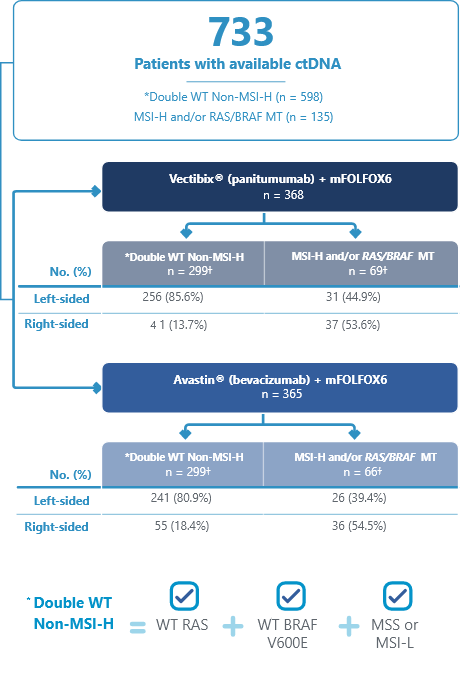References
1. Watanabe J, Muro K, Shitara K, et al. JAMA. 2023;329:1271-1282.
2. Vectibix® (panitumumab) prescribing information, Amgen. 3.
Douillard J-Y, Oliner KS, Siena S, et al. N Engl J Med. 2013;369:1023-1034. 4.
Yamazaki K,
Muro K, Watanabe J, et al. Presented at: American Society of Clinical Oncology (ASCO) Annual Meeting; June 2-6,
2023; Chicago 5.
Kobayashi Y, Komatsu Y, Yuki S, et al. Future Oncol. 2015;11:617-627. 6.
Data on file, PARADIGM
Post Hoc Biomarker Analysis Safety AEs; July 2021. 7.
AVASTIN® (bevacizumab) prescribing information, Genentech. 8. Ma P, Yang BB,
Wang YM,
et al. J Clin Pharmacol. 2009;49:1142-1156. 9. Chen D, Li L, Zhang X, et al.
Medicine (Baltimore). 2018;97:e0097. 10. Arnold D, Lueza B, Douillard JY, et
al. Ann Oncol. 2017;28:1713-1729. 11. Tejpar S, Stintzing S, Ciardello F, et
al. JAMA Oncol. 2017;3;194-201. 12. Loree JM, Dowers A, Tu D, et al. Clin
Cancer Res. 2021;27:52-59.












